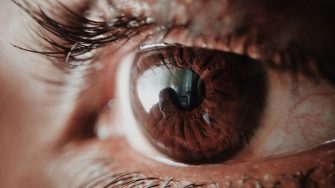
About us
The group is interested in diseases that develop in the anterior segment of the eye including those that arise on the surface of the cornea because of deficiency in stem cells, environmental insults, from infection or autoimmunity. Our overarching goal is to determine the triggering factors and the mechanisms by which they develop. It is hoped that this information will provide vital clues for devising novel therapeutic strategies.
Our research is conducted using patient-derived and cadaveric donor specimens including tissue, blood, DNA and cells. Transgenic animal and cell culture models complement our human tissue-based investigations. Our investigations use molecular, biochemical and genetic approaches as well as cutting-edge imaging, image analysis and microscopy platforms.
Current projects
- Understanding how stem cells maintain the cornea under steady-state.
- Understanding how stem cells partake in wound-healing.
- Developing animal models of wound healing and dry eye disease.
- Discovering better markers of corneal stem cells in order to devise better transplantation/grafting strategies for patients with severe corneal disease.
- Understanding how the cornea is impacted by metabolic disease including diabetes and obesity.
Team
Collaborators
- Professor Silvana Schellini, Botucatu School of Medicine, State University of Sao Paulo, Brazil
- Professor James Jester, University of California, Irvine, USA
- Dr Helen Makarenkova, Scripps Research Institute, La Jolla, CA
- Professor Stephanie Watson, Save Sight Institute, University of Sydney
- Dr John Male, Save Sight Institute, University of Sydney
- A/Professor Guy Lyons, Dermatology, Sydney Medical School, University of Sydney
Resources & tools
- Parfitt GJ, Lewis P, Young RD, Richardson A, Lyons JG, Di Girolamo N, Jester JV. Renewal of holocrine meibomian glands by label-retaining, uni-potent epithelial progenitors. Stem Cell Rep. 2016;7:399-410.
- Lobo E, Delic NC, Richardson A, Raviraj V, Halliday GM, Di Girolamo N, Myerscough M, Lyons G. Self-organized centripetal movement of corneal epithelium in the absence of external cues. Nature Commun. 2016;7:12388.
- Bobba S, Di Girolamo N, Mills R, Daniell M, Chan E, Harkin D, Cronin B, Crawford G, McGhee C, Watson S. Nature and incidence of severe limbal stem cell deficiency in Australia and New Zealand. Clin Exp Ophthalmol. 2017;45:174-181.
- Wakefield D, Di Girolamo N, Thurau S. Scleritis. Chapter 1. Anatomy and pathogenesis of scleritis. Essentials in Ophthalmology, 2017 Springer Books. Ed Arun Singh pp1-17 Invited Book Chapter
- Delic NC, JG Lyons, Di Girolamo N, Halliday GM. The damaging effects of ultraviolet radiation on the cornea. Photochem Photobiol. 2017;93:920-929. Cover Feature and Feature Article on journal web page.
- Richardson A, Lobo E, Delic N, Myerscough M, Lyons JG, Wakefield D, Di Girolamo N. Keratin-14-positive precursor cells spawn a population of migratory corneal epithelia that maintain tissue mass throughout life. Stem Cell Reports. 2017;9:1080-1096. Cover Feature
- Sancilio S, Di Staso S, Sebastiani S, Centurione L, Di Girolamo N, Ciancaglini M, Di Pietro R. Curcuma Longa is able to induce apoptotic cell death of pterygium-derived human keratinocytes. Biomed Res Int. 2017;2017:2956597.
- Nguyen K, Bobba S, Richardson A, Watson S, Wakefield D, Di Girolamo N. Scaffolds of limbal epithelial stem cell transplantation. Acta Biomater. 2018;65:21-35. REVIEW
- Richardson A, Park M, Watson SL, Wakefield D, Di Girolamo N. Visualizing the fate of transplanted K14-Confetti corneal epithelial cells in a mouse model of limbal stem cell deficiency. Invest Ophthalmol Vis Sci. 2018;59:1630-1640.
- Bobba S, Devlin C, Di Girolamo N, Wakefield D, McCluskey PJ, Chan E, Daniell M, Saaehla R, Radford C, Dart J, Watson S. Incidence, clinical features and diagnosis of cicatrising conjunctivitis in Australia and New Zealand. Eye. 2018;32:1636-1643.
- Bobba S, Di Girolamo N, Munsie M, Chen F, Pebay A, Harkin D, Hewitt A, O’Connor M, McLenachan S, Watson SL. The current state of stem cell therapy for ocular disease. Exp Eye Res. 2018;117:65-75.
- Park M, Richardson A, Pandzic E, Lobo EP, Whan R, Watson SL, Lyons JG, Wakefield D, Di Girolamo N. Visualizing the contribution of keratin-14+ limbal epithelial precursor cells in corneal wound-healing. Stem Cell Reports. 2019;12:14-28. Cover Feature Preview-Editorial by: Wijnholds J. Basal cell migration in regeneration of the corneal wound-bed. Stem Cell Reports. 2019;12:3-5.
- Park M, Mazalo J, Di Girolamo N. Insulin-like growth factor binding protein-7: a marker of conjunctivalization in an animal model of limbal stem cell deficiency. Ocular Surf. Accepted 21 May 2019
Grants & funding
The group has been continuously funded by peer reviewed category 1 project grants from the NHMRC and Ophthalmic Research Institute of Australia (ORIA) for over two decades. Prof Di Girolamo’s new technique for transplanting stem cells into patients with corneal blindness was featured on the ABC’s New Inventors program in 2010 and the ABC’s Catalyst program in 2011.
- NHMRC Project Grant. (2016-2020) Di Girolamo, Watson, Wakefield
- NHMRC Project Grant. (2019-2022) Di Girolamo, Watson, Wakefield
- ARC Special Research Initiative (2018-2019)
- MRFF Accelerator Research Stem Cell Program (2019-2021)
Students
- Mr Richard Zhang (PhD student)



